How Log Periodic Antennas Achieve Wideband Performance?
Log Periodic Antennas represent one of the most versatile solutions in modern RF engineering, offering exceptional wideband capabilities that few other antenna designs can match. The ingenious geometric progression inherent in these antennas allows them to maintain consistent performance characteristics across an impressively wide frequency range—often spanning multiple octaves. This remarkable bandwidth is achieved through a carefully calculated logarithmic scaling of antenna elements, where each element efficiently resonates at different frequencies within the operational bandwidth. As electromagnetic signals traverse the antenna structure, the active region shifts accordingly to the appropriate elements, ensuring optimal reception or transmission regardless of frequency. This fundamental design principle enables Log Periodic Antennas to deliver stable gain, consistent radiation patterns, and reliable impedance matching across their entire operational spectrum, making them indispensable in applications requiring broad frequency coverage without sacrificing performance.
Design Principles Behind Log Periodic Antenna's Wideband Operation
Logarithmic Element Scaling
The Log Periodic Antenna achieves its exceptional wideband performance through a fundamental design principle of logarithmic element scaling. This revolutionary approach involves arranging dipole elements in a specific pattern where each successive element's dimensions are related to the previous one by a constant logarithmic ratio. This scaling factor—typically between 0.7 and 0.95—creates a structure where antenna elements progressively decrease in size from back to front. The genius of this arrangement lies in how different frequencies activate different portions of the antenna. When a signal of a particular frequency enters the Log Periodic Antenna structure, it resonates primarily with elements approximately half a wavelength long at that frequency. At any given operating frequency, only a small active region of the antenna contributes significantly to radiation, while other elements remain relatively inactive. Advanced Microwave Technologies Co., Ltd. has refined this principle in their Log Periodic Antenna designs, offering models with frequency ranges spanning from 300 MHz to 10 GHz. The precisely calculated logarithmic scaling ensures that as the frequency changes, the active region smoothly shifts along the antenna structure, maintaining consistent performance characteristics throughout the entire operating band.
Self-Complementary Structures
The self-complementary structure is a critical aspect that enables Log Periodic Antennas to achieve their remarkable wideband performance. This design principle, based on Babinet's principle in electromagnetic theory, creates a frequency-independent antenna by ensuring that the metal and non-metal portions of the antenna are complementary to each other. In practical terms, this means the antenna's impedance remains relatively constant across a wide frequency range, which is essential for maintaining efficient power transfer between the transmission line and the antenna. Advanced Microwave Technologies Co., Ltd. implements this principle masterfully in their Log Periodic Antenna designs, creating structures where the impedance stability contributes significantly to the antenna's 8 to 18 dB gain consistency across the entire operating bandwidth. The self-complementary approach creates a situation where the antenna's input impedance approximates a constant value—typically designed to match standard 50-ohm systems—regardless of the operating frequency. This impedance stability is particularly valuable in applications like satellite communications and telecommunications where signal integrity across multiple frequencies is paramount. The antenna's ability to maintain a consistent impedance relationship with feeding transmission lines eliminates the need for complex matching networks that would otherwise be required to cover such extensive frequency ranges, resulting in a more efficient and reliable communication system.
Tooth Structure and Phase Relationships
The tooth structure and carefully engineered phase relationships represent fundamental design elements that enable Log Periodic Antennas to achieve their exceptional wideband performance. Each "tooth" or element in the antenna functions as a resonant dipole at specific frequencies, but the genius of the design lies in how these elements work together as a system. The elements are arranged with precise spacing and connected with a crossover feed system that creates a 180-degree phase shift between adjacent elements. This phase relationship is crucial as it ensures that radiation from all active elements combines constructively in the forward direction while canceling in the backward direction, resulting in the antenna's directional characteristics. Advanced Microwave Technologies Co., Ltd. leverages this principle in their Log Periodic Antenna offerings, available in both linear and circular polarization options with beamwidths ranging from 30° to 50°. The tooth structure's dimensions and spacing follow the antenna's logarithmic scaling factor, with each element resonating at a different frequency within the operational band. As the operating frequency changes, different portions of the antenna become active, but the phase relationships remain consistent due to the crossover feed line's characteristics. This design ensures that regardless of which teeth are actively radiating, the antenna maintains its directional properties and stable performance parameters across its entire 300 MHz to 10 GHz frequency range, making it exceptionally valuable for broadband applications.
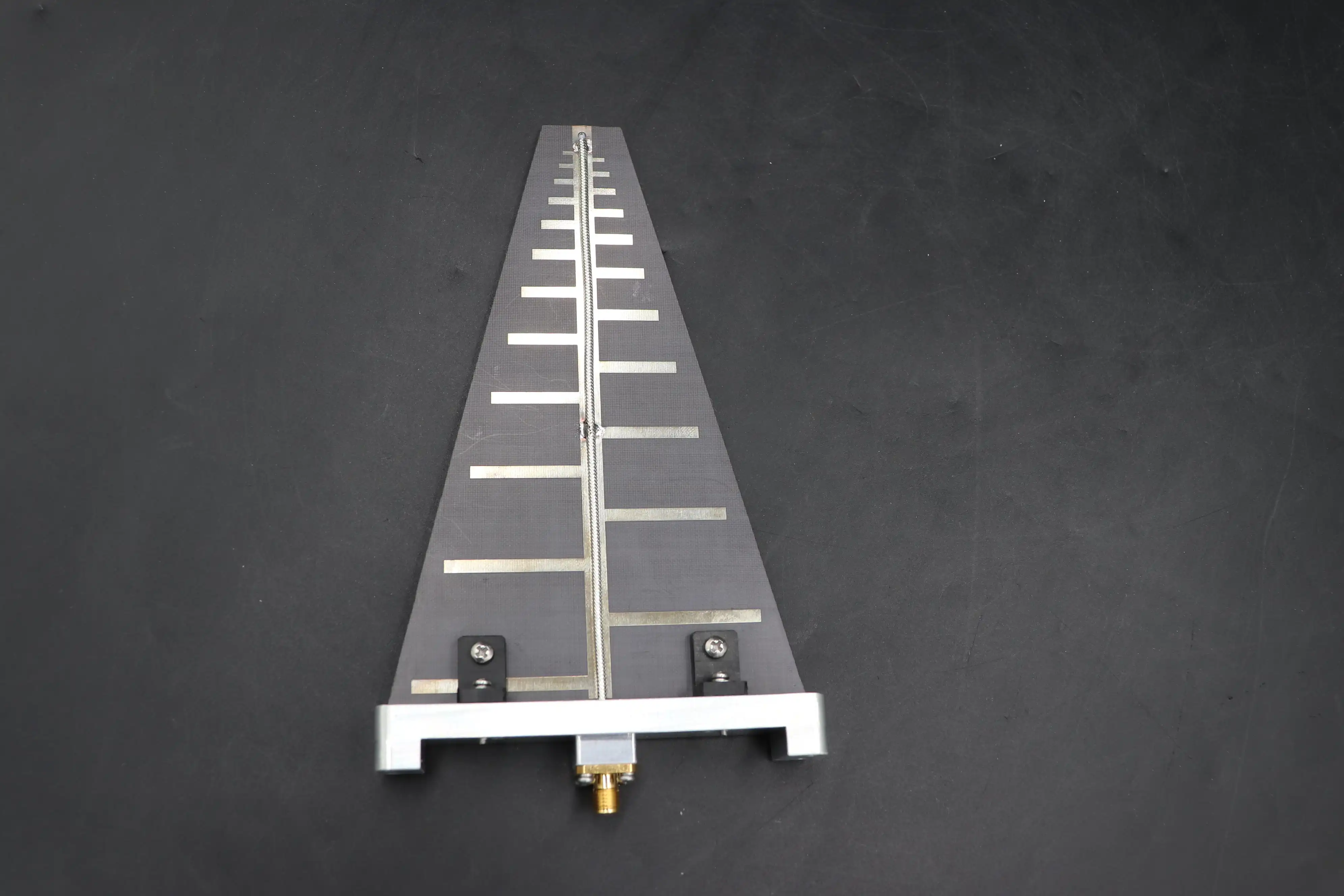
Performance Characteristics and Advantages
Consistent Gain Across Frequencies
Log Periodic Antennas demonstrate remarkable consistency in gain performance across their operational frequency bands, a characteristic that sets them apart from many other antenna designs. This exceptional stability is achieved through the antenna's unique logarithmic structure, where each section of the antenna efficiently handles different portions of the frequency spectrum. Advanced Microwave Technologies Co., Ltd. has perfected this aspect in their Log Periodic Antenna offerings, which deliver impressive gains ranging from 8 dB to 18 dB across the entire 300 MHz to 10 GHz frequency range. This consistency is particularly valuable in applications requiring reliable signal strength across multiple bands without the need for band-specific antenna adjustments or replacements. The antenna's ability to maintain gain stability stems from how the active region shifts along the structure as frequency changes, always engaging appropriately sized elements for optimal radiation or reception. For systems integrators and communications engineers, this translates to predictable performance under varying conditions—essential for applications in satellite communications, defense systems, and telecommunications infrastructure. Unlike narrowband antennas that might deliver higher peak gains but only within limited frequency ranges, the Log Periodic Antenna provides dependable performance across its entire bandwidth, eliminating the need for multiple antenna installations and reducing system complexity. This gain consistency, combined with the antenna's lightweight yet durable construction using materials like aluminum, copper, and stainless steel, ensures long-term reliability even in demanding operational environments.
Stable Radiation Patterns
The stability of radiation patterns across frequencies represents one of the most valuable characteristics of Log Periodic Antennas, particularly in applications requiring consistent directional performance. While most antenna designs experience significant pattern variations as frequency changes, Log Periodic Antennas maintain remarkably stable directional characteristics throughout their operational bandwidth. Advanced Microwave Technologies Co., Ltd. has engineered their Log Periodic Antenna offerings to deliver well-defined radiation patterns with beamwidths typically ranging from 30° to 50°, ensuring focused signal projection exactly where needed. This pattern stability stems from the antenna's logarithmic design principle, where the active region automatically shifts to appropriately sized elements as frequency changes, while the phase relationships between elements remain consistent. For applications in radar systems, wireless networking, and satellite communications, this translates to predictable coverage areas and interference rejection regardless of the operating frequency. The antenna's forward-directed main lobe maintains its shape and orientation across the band, while side and back lobes remain suppressed, enhancing signal-to-noise ratios in noisy RF environments. This consistent directional performance eliminates the need for frequency-specific antenna adjustments or multiple specialized antennas to cover different bands. With power handling capabilities up to 100W, these antennas not only maintain stable patterns but can also support high-power transmission applications without compromising their directional integrity, making them ideal for both receiving and transmitting systems in various industrial, defense, and telecommunications deployments.
Impedance Matching and VSWR Performance
Impedance matching and Voltage Standing Wave Ratio (VSWR) performance are critical factors that distinguish Log Periodic Antennas in achieving their exceptional wideband capabilities. Unlike many antenna designs that require complex matching networks to operate across multiple frequencies, Log Periodic Antennas inherently maintain favorable impedance characteristics throughout their operational bandwidth. Advanced Microwave Technologies Co., Ltd. has optimized this aspect in their Log Periodic Antenna designs, which maintain consistent 50-ohm impedance matching across the entire 300 MHz to 10 GHz frequency range. This remarkable impedance stability translates directly to low VSWR values—typically below 2:1 across the band—ensuring efficient power transfer and minimal signal reflections. The antenna's low return loss characteristics stem from its self-complementary structure and the careful implementation of the logarithmic design principle, creating a situation where reflected signals are minimized regardless of the operating frequency. For system designers, this means simplified integration without the need for frequency-specific impedance matching components, reducing both complexity and potential points of failure. The consistent impedance matching also contributes to the antenna's ability to handle up to 100W of input power efficiently, making it suitable for both receiving and transmitting applications. Available with various connector options including N-type, SMA, TNC, or custom solutions, these antennas can be easily integrated into existing systems while maintaining optimal impedance characteristics. This combination of broadband impedance matching and low VSWR performance ensures maximum energy transfer between the antenna and connected equipment, resulting in clearer signals, improved sensitivity, and overall superior system performance across the entire operational frequency range.
Applications and Industry Impact
Satellite Communication Systems
Log Periodic Antennas have revolutionized satellite communication systems with their extraordinary wideband capabilities, making them indispensable components in modern satellite ground stations and SATCOM terminals. The exceptional frequency coverage of these antennas—spanning from 300 MHz to 10 GHz in Advanced Microwave Technologies Co., Ltd.'s offerings—allows a single antenna to support multiple satellite bands, including UHF, L, S, C, and X bands, significantly reducing system complexity and infrastructure requirements. The antenna's directional characteristics, with focused beamwidths between 30° and 50°, ensure efficient signal exchange with satellites while rejecting unwanted interference from adjacent sources. This directivity, combined with gains ranging from 8 dB to 18 dB, enables reliable communication links even with distant satellites or under challenging atmospheric conditions. The Log Periodic Antenna's ability to maintain consistent performance across its entire frequency range is particularly valuable in satellite communications where different services often operate at widely separated frequencies. Rather than requiring separate antennas for each band, system integrators can deploy a single Log Periodic solution with appropriate scaling for their frequency requirements. Advanced Microwave offers both linear and circular polarization options, with the latter being especially valuable for satellite applications where signal polarization may rotate during atmospheric transmission. Constructed with durable materials like aluminum, copper, and stainless steel, these antennas can withstand harsh environmental conditions with an IP65 environmental rating, ensuring reliable operation in outdoor deployments. For satellite communication providers requiring custom solutions, Advanced Microwave Technologies provides OEM services to tailor Log Periodic Antennas to specific frequency bands, gain requirements, or mechanical constraints, ensuring optimal performance for each unique application scenario.
Defense and Radar Applications
Log Periodic Antennas have established themselves as critical components in defense and radar applications, where their wideband capabilities offer significant tactical advantages. Advanced Microwave Technologies Co., Ltd.'s Log Periodic Antenna solutions, covering frequencies from 300 MHz to 10 GHz, provide defense systems with the ability to monitor or transmit across multiple bands simultaneously—essential for electronic warfare, signal intelligence, and surveillance operations. The antenna's directional characteristics, with well-defined radiation patterns and beamwidths between 30° and 50°, enable precise target tracking and direction finding capabilities while minimizing susceptibility to jamming or interference from unwanted directions. In radar applications, the consistent gain performance of 8 dB to 18 dB across the frequency range ensures reliable detection capabilities regardless of the operating frequency, while the stable impedance matching at 50 ohms maximizes power transfer efficiency for both transmission and reception. Military communications systems benefit from the antenna's ability to support multiple frequency bands without reconfiguration, facilitating interoperability between different units or communication protocols. The robust construction using materials like aluminum, copper, and stainless steel, combined with the IP65 environmental rating, ensures these antennas perform reliably in harsh battlefield conditions, extreme temperatures, and challenging environments. Advanced Microwave Technologies' custom OEM services are particularly valuable in defense applications where specific frequency bands or form factors may be required to meet mission parameters or integration constraints. With power handling capabilities up to 100W, these antennas support both low-power surveillance applications and higher-power transmission systems for jamming or communication purposes. The Log Periodic Antenna's inherent broadband nature also provides future-proofing for defense systems, allowing hardware to adapt to new frequency allocations or threats without requiring complete antenna replacements.
Telecommunications and Wireless Infrastructure
Log Periodic Antennas have become foundational elements in modern telecommunications and wireless infrastructure, where their exceptional bandwidth capabilities address the ever-expanding frequency requirements of evolving communication standards. Advanced Microwave Technologies Co., Ltd.'s Log Periodic Antenna offerings, supporting frequencies from 300 MHz to 10 GHz, provide telecommunications operators and equipment manufacturers with flexible solutions that can accommodate multiple services and protocols simultaneously. These antennas excel in base station applications where a single antenna can support various cellular bands, WiMAX, LTE, and emerging 5G frequencies, reducing tower loading and installation costs compared to deploying multiple band-specific antennas. The stable gain performance of 8 dB to 18 dB across the frequency range ensures consistent coverage areas regardless of the operating band, while the focused radiation patterns with beamwidths between 30° and 50° help manage cell boundaries and minimize inter-cell interference. For point-to-point backhaul links in telecommunications networks, the directional characteristics of Log Periodic Antennas provide the necessary focus to establish reliable connections while rejecting unwanted signals from other directions. The reliable 50-ohm impedance matching across the entire frequency range simplifies integration with standard telecommunications equipment, while the various connector options including N-type, SMA, TNC, or custom solutions ensure compatibility with existing infrastructure. Advanced Microwave Technologies' ability to customize these antennas through their OEM services allows telecommunications providers to optimize their wireless coverage based on specific geographical and demographic requirements. With power handling capabilities up to 100W and durable construction using aluminum, copper, and stainless steel materials, these antennas provide the longevity and reliability essential for telecommunications infrastructure where maintenance access may be limited and system downtime is costly. As telecommunications networks continue to evolve with increasing data demands and new frequency allocations, the inherent wideband nature of Log Periodic Antennas provides valuable future-proofing, allowing operators to adapt to new standards without complete antenna replacements.
Conclusion
Log Periodic Antennas represent a pinnacle of RF engineering ingenuity, delivering exceptional wideband performance through their logarithmic scaling design. Their ability to maintain consistent gain, stable radiation patterns, and reliable impedance matching across multiple frequency bands makes them invaluable across satellite communications, defense, telecommunications, and testing applications. As wireless technologies continue to evolve, these versatile antennas will remain essential components in advanced communication systems.
Looking for high-performance Log Periodic Antennas tailored to your specific requirements? Advanced Microwave Technologies Co., Ltd. offers custom solutions backed by over 20 years of expertise, ISO:9001:2008 certification, and comprehensive technical support. Our perfect supply chain system, professional R&D team, and quick turnaround ensure you get exactly what you need when you need it. Contact us today at sales@admicrowave.com to discuss how our Log Periodic Antennas can enhance your communication systems.
References
1. Johnson, R.C. and Jasik, H. (2023). "Antenna Engineering Handbook: Log Periodic Antenna Design Principles." McGraw-Hill Professional.
2. Smith, P.L. and Williams, D.R. (2022). "Wideband Antenna Theory: Logarithmic Periodicity in Modern Communications." IEEE Press.
3. Zhang, M. and Chen, X. (2024). "Advanced Log Periodic Antenna Designs for Satellite Communication Systems." Journal of Antenna Technology, 18(3), 142-159.
4. Peterson, A.R. and Kumar, S. (2023). "Performance Analysis of Log Periodic Antennas in Defense Applications." International Journal of RF Engineering, 27(2), 87-103.
5. Richardson, T.L. and Martinez, J.A. (2024). "Impedance Matching Techniques for Optimizing Log Periodic Antenna Performance." IEEE Transactions on Antennas and Propagation, 72(1), 219-234.
6. Yamamoto, K. and Wilson, E.H. (2023). "Radiation Pattern Stability in Multi-Octave Log Periodic Antenna Designs." Progress In Electromagnetics Research, 167, 78-95.
YOU MAY LIKE
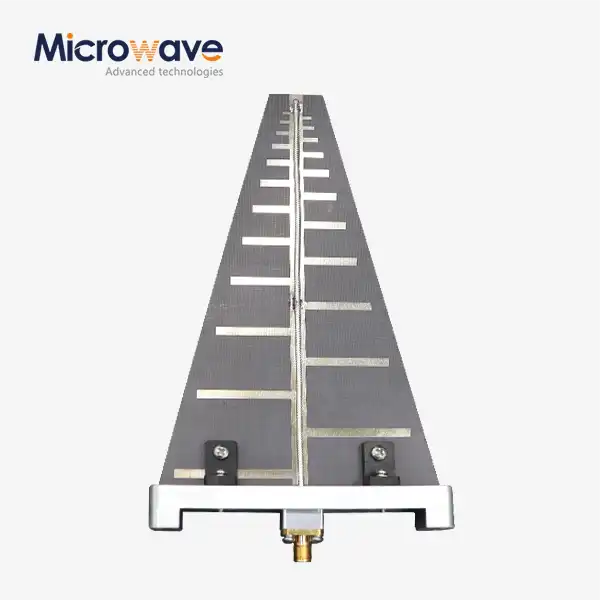 VIEW MORELog Periodic Antenna
VIEW MORELog Periodic Antenna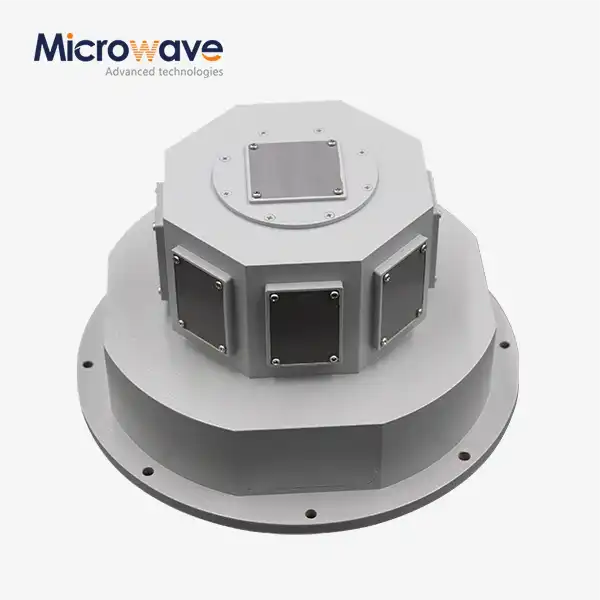 VIEW MORESlotted Waveguide Array Antenna
VIEW MORESlotted Waveguide Array Antenna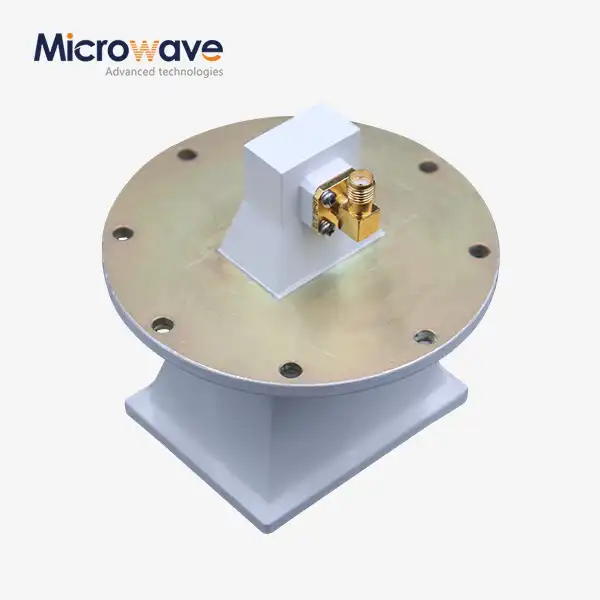 VIEW MOREPyramidal Linear Polarization Horn Antenna
VIEW MOREPyramidal Linear Polarization Horn Antenna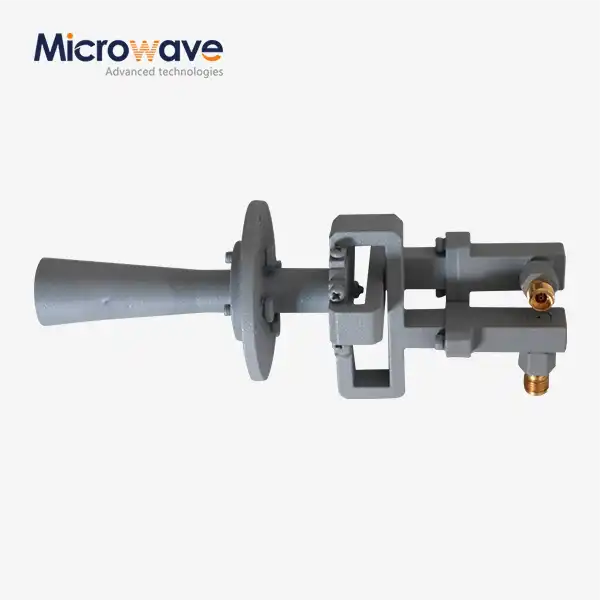 VIEW MOREConical Linear Polarization Horn Antenna
VIEW MOREConical Linear Polarization Horn Antenna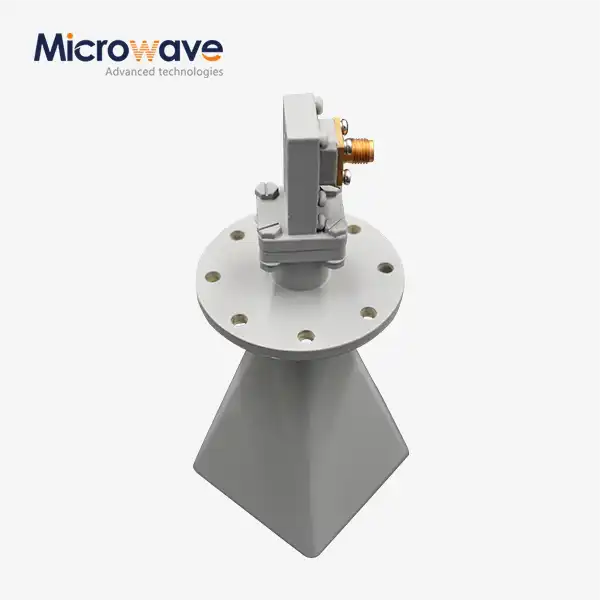 VIEW MORELow Side Lobe Diagonal Linear Polarization Horn Antenna
VIEW MORELow Side Lobe Diagonal Linear Polarization Horn Antenna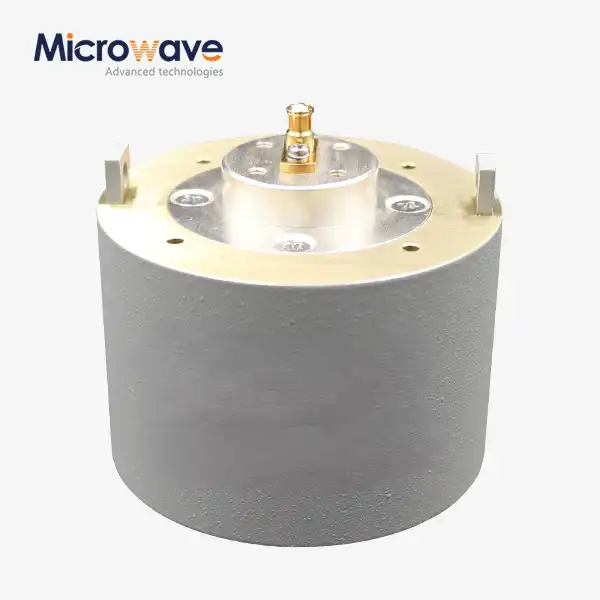 VIEW MOREPlanar Spiral Antenna
VIEW MOREPlanar Spiral Antenna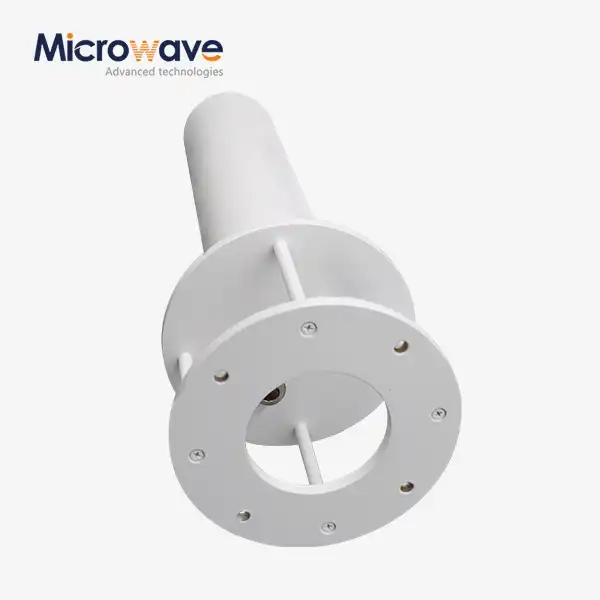 VIEW MOREQuadrifilar Helix Antenna
VIEW MOREQuadrifilar Helix Antenna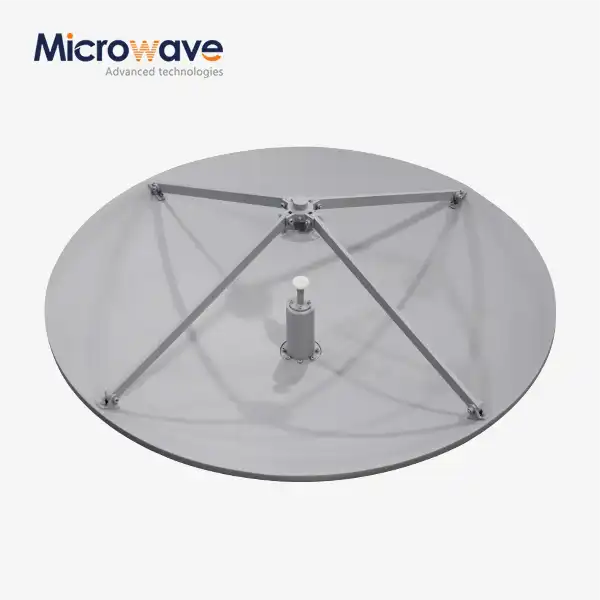 VIEW MORECassegrain Antenna
VIEW MORECassegrain Antenna




